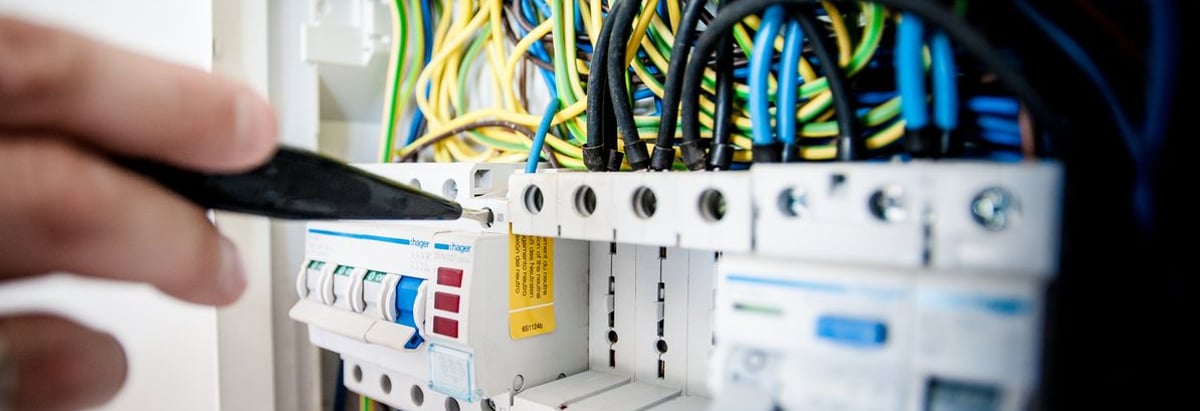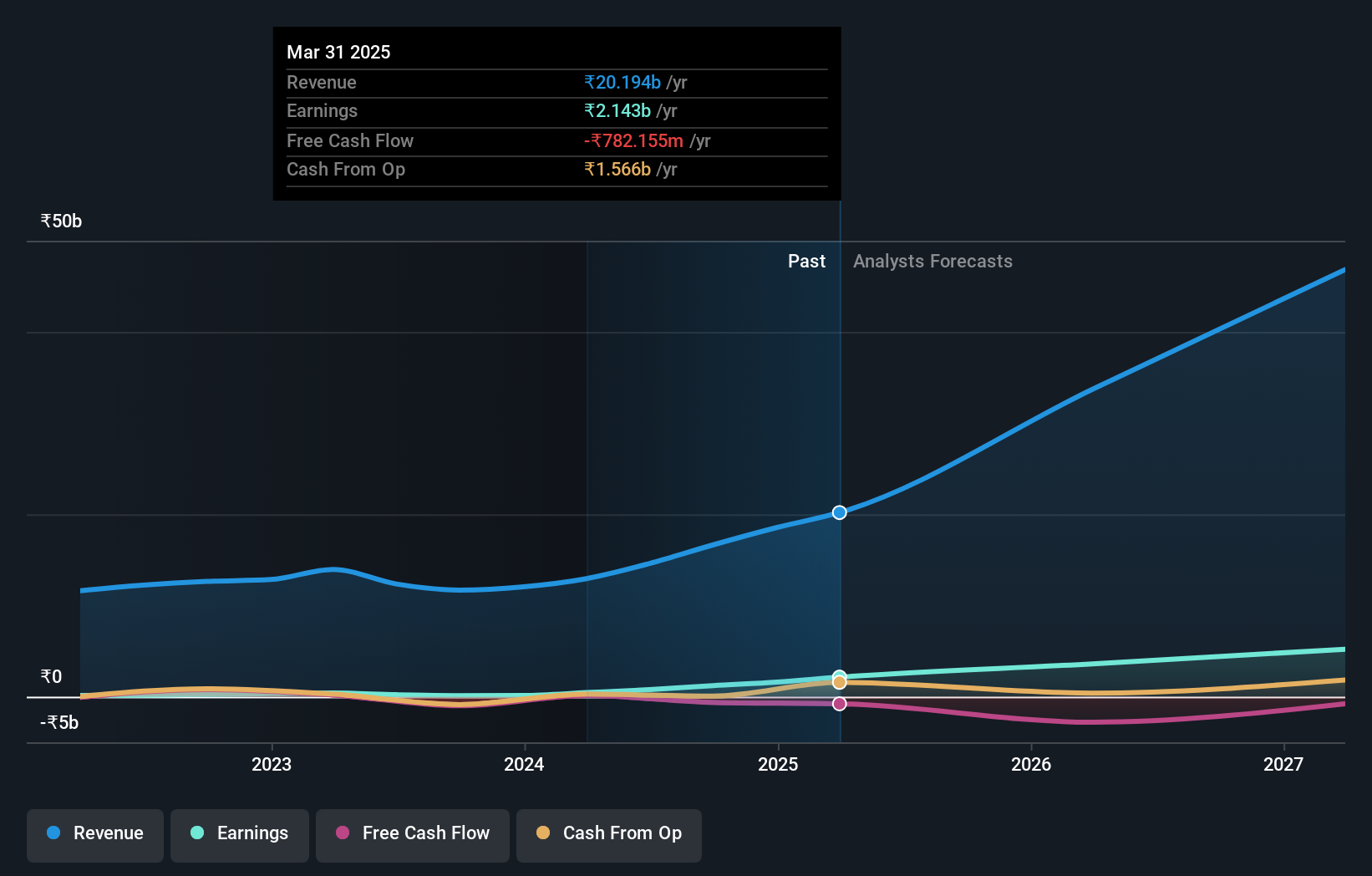- India
- /
- Electrical
- /
- NSEI:TARIL
Following recent decline, Transformers and Rectifiers (India) Limited's (NSE:TARIL) top shareholder Top Key Executive Jitendra Mamtora sees holdings value drop by 3.8%

Key Insights
- Transformers and Rectifiers (India)'s significant insider ownership suggests inherent interests in company's expansion
- A total of 3 investors have a majority stake in the company with 55% ownership
- 12% of Transformers and Rectifiers (India) is held by Institutions
To get a sense of who is truly in control of Transformers and Rectifiers (India) Limited (NSE:TARIL), it is important to understand the ownership structure of the business. And the group that holds the biggest piece of the pie are individual insiders with 68% ownership. In other words, the group stands to gain the most (or lose the most) from their investment into the company.
As market cap fell to ₹149b last week, insiders would have faced the highest losses than any other shareholder groups of the company.
In the chart below, we zoom in on the different ownership groups of Transformers and Rectifiers (India).
View our latest analysis for Transformers and Rectifiers (India)

What Does The Institutional Ownership Tell Us About Transformers and Rectifiers (India)?
Many institutions measure their performance against an index that approximates the local market. So they usually pay more attention to companies that are included in major indices.
As you can see, institutional investors have a fair amount of stake in Transformers and Rectifiers (India). This suggests some credibility amongst professional investors. But we can't rely on that fact alone since institutions make bad investments sometimes, just like everyone does. It is not uncommon to see a big share price drop if two large institutional investors try to sell out of a stock at the same time. So it is worth checking the past earnings trajectory of Transformers and Rectifiers (India), (below). Of course, keep in mind that there are other factors to consider, too.

We note that hedge funds don't have a meaningful investment in Transformers and Rectifiers (India). Our data suggests that Jitendra Mamtora, who is also the company's Top Key Executive, holds the most number of shares at 36%. When an insider holds a sizeable amount of a company's stock, investors consider it as a positive sign because it suggests that insiders are willing to have their wealth tied up in the future of the company. The second and third largest shareholders are Satyen Mamtora and Karunaben Mamtora, with an equal amount of shares to their name at 9.5%. Interestingly, the second and third-largest shareholders also happen to be the Senior Key Executive and Member of the Board of Directors, respectively. This once again signifies considerable insider ownership amongst the company's top shareholders.
After doing some more digging, we found that the top 3 shareholders collectively control more than half of the company's shares, implying that they have considerable power to influence the company's decisions.
Researching institutional ownership is a good way to gauge and filter a stock's expected performance. The same can be achieved by studying analyst sentiments. While there is some analyst coverage, the company is probably not widely covered. So it could gain more attention, down the track.
Insider Ownership Of Transformers and Rectifiers (India)
While the precise definition of an insider can be subjective, almost everyone considers board members to be insiders. Company management run the business, but the CEO will answer to the board, even if he or she is a member of it.
Insider ownership is positive when it signals leadership are thinking like the true owners of the company. However, high insider ownership can also give immense power to a small group within the company. This can be negative in some circumstances.
It seems that insiders own more than half the Transformers and Rectifiers (India) Limited stock. This gives them a lot of power. Given it has a market cap of ₹149b, that means insiders have a whopping ₹101b worth of shares in their own names. It is good to see this level of investment. You can check here to see if those insiders have been selling any of their shares.
General Public Ownership
The general public-- including retail investors -- own 20% stake in the company, and hence can't easily be ignored. While this group can't necessarily call the shots, it can certainly have a real influence on how the company is run.
Next Steps:
While it is well worth considering the different groups that own a company, there are other factors that are even more important. Consider for instance, the ever-present spectre of investment risk. We've identified 1 warning sign with Transformers and Rectifiers (India) , and understanding them should be part of your investment process.
Ultimately the future is most important. You can access this free report on analyst forecasts for the company.
NB: Figures in this article are calculated using data from the last twelve months, which refer to the 12-month period ending on the last date of the month the financial statement is dated. This may not be consistent with full year annual report figures.
Valuation is complex, but we're here to simplify it.
Discover if Transformers and Rectifiers (India) might be undervalued or overvalued with our detailed analysis, featuring fair value estimates, potential risks, dividends, insider trades, and its financial condition.
Access Free AnalysisHave feedback on this article? Concerned about the content? Get in touch with us directly. Alternatively, email editorial-team (at) simplywallst.com.
This article by Simply Wall St is general in nature. We provide commentary based on historical data and analyst forecasts only using an unbiased methodology and our articles are not intended to be financial advice. It does not constitute a recommendation to buy or sell any stock, and does not take account of your objectives, or your financial situation. We aim to bring you long-term focused analysis driven by fundamental data. Note that our analysis may not factor in the latest price-sensitive company announcements or qualitative material. Simply Wall St has no position in any stocks mentioned.
About NSEI:TARIL
Transformers and Rectifiers (India)
Manufactures and sells transformers in India.
Exceptional growth potential with flawless balance sheet.
Market Insights
Community Narratives




